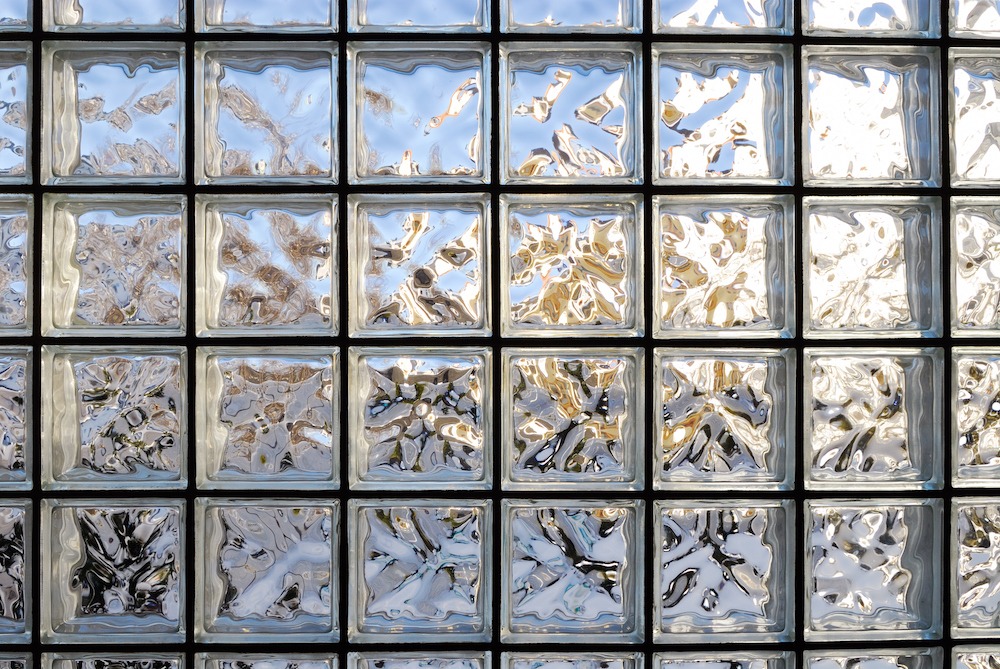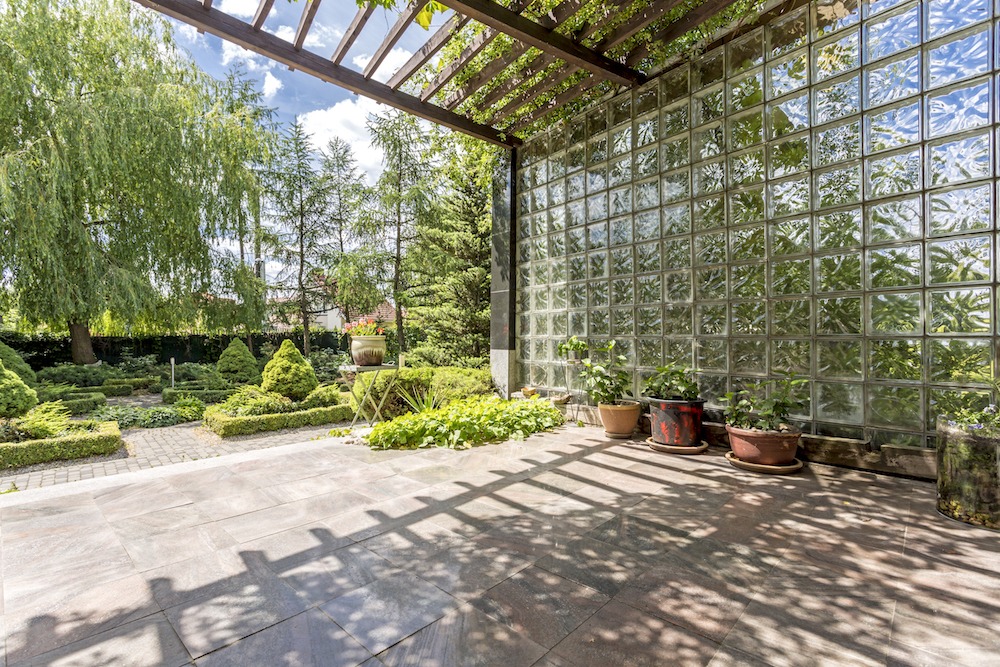Glass unit masonry has been used more frequently in the last few years for several good reasons. It offers various levels of light transmission into buildings and, depending on the pattern or color in the glass block, can also provide more privacy than conventional windows. Glass block are low maintenance, durable and provide energy efficiency comparable to double pane windows.
Glass block are traditionally laid with a relatively dry Type S or N mortar since the glass doesn’t wick any moisture from the mortar. The panels are reinforced at a maximum of 16 inches on center with joint reinforcing consisting of two W1.7 side rods with welded W1.7 cross rods. Glass block panels are laterally restrained using panel anchors at 16 inches on center along the top and sides of the panel and an asphalt emulsion isolation joint at the sill.
There are several proprietary systems that provide similar performance to the more traditional glass block construction. These systems typically use U-shaped channels installed around the perimeter of the opening for lateral restraint and use joint spacers and specialized sealants to reinforce and bond the units to create the panel. After the sealants have cured, product-specific grouts are used to fill the joints between glass units in a manner similar to grouting ceramic tile.

Sizes
Glass block come in a variety of nominal sizes including (in inches): 4 x 8, 6 x 6, 6 x 8, 8 x 8 and 12 x 12. Two thicknesses of 3 inch (thin) and 4 inch (standard) are available with the standard units typically used in commercial construction and the thin units generally used for interior glass block panels. The modular nature of glass block allows the use of multiple size units within a panel to create visual interest.
Code Limitations
Glass block are always non-loadbearing. This means that headers/lintels and jambs must be designed to span the opening and carry the additional vertical and lateral loads. The maximum area of an exterior glass block panel may also be limited by the design wind pressure in some locations.
For standard thickness block and a factored design wind pressure of 20 pounds per square foot, the area limit is 175 square feet by the Building Code Requirements for Masonry Structures (TMS 402). In high wind areas, the allowable area will be considerably less. It is a recommended to have a local engineer design any glass block opening larger than 50 square feet.
For thin-unit glass block panels, the code limits the maximum area to 100 square feet on exterior walls.
Construction Tips
First, ensure that the opening is the correct size (and square) and that the jambs are plumb and the sill and head are level. To verify the correct opening size, multiply the nominal unit size by the number of units and add ¼ inch. For example, an opening 4 units wide and 6 units tall utilizing nominal 8-inch units should be 32 ¼ by 48 ¼ inches. For panels exceeding 10 feet in width or height, the opening may need to be increased an additional amount to accommodate additional thermal or differential movement. The two diagonal measurements to check for square should be within 1/8 inch for typical window-sized openings.

